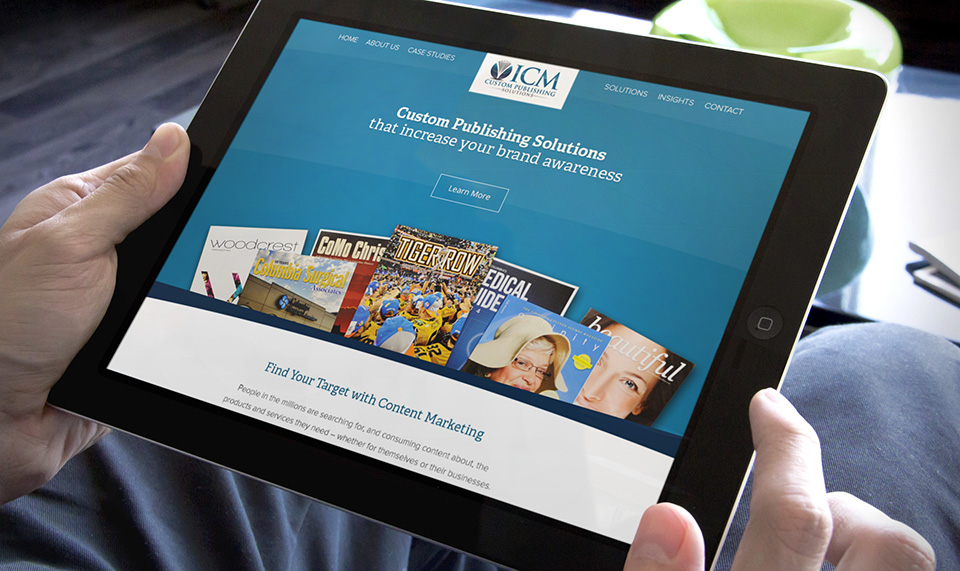It’s hardly a surprise that content on a web page can substantially delay the web design process. It’s the main contributor of hold-ups for website design projects. People end up producing fluff content, or ponder how to start the content creation process.
content marketing
You might be reading this article for several reasons. Perhaps a social media post that piqued your interest brought you here. Perhaps you’re conducting research on marketing and branding agencies in St. Louis for a project you’re working on. Perhaps you’re simply scrolling through headlines of interest while you’re in line at the grocery store.
It hardly matters how you got here; you’re here because you need clarity on a specific topic: copywriting.

When it comes to branding, copywriting is a powerful factor. From your brand’s foundation to the content you send out to potential customers, copywriting is mandatory. Ultimately, your copywriting’s quality defines how your brand is perceived. Let’s review some branding components that stress how important copywriting is. Continue Reading
Non-Profits Should Have a Social Media Communication Strategy
Posted on 03/07/2017Non-profits often use a traditional communication strategy to generate membership growth, awareness and outreach. This kind of marketing follows the tried and true model of using word-of-mouth, paper, mail, advertisement and maybe radio or public TV spots to generate brand awareness.
Unfortunately, unless a non-profit is a large player like the Sierra Club, for example, these methods don’t reach the large audience they used to. Magazine and newspaper spots are probably the most effective of these traditional tools, because at least readers get a chance to learn a thing or two with content written by the organization itself.
The Digital Strategy
However, one modern communication strategy element that is proven to generate lots of attention and activity is social media.
With a constant flow of good content, two-way engagement with followers, and a good mix of digital media, many non-profits have seen their membership grow.

The trick to developing a social media following and then converting those followers into supporters is to first have a plan. That includes determining what is the main, overarching theme to be communicated, building a schedule of content and material that will be developed within that theme’s parameters, and then dedicating resources and people to monitor and manage the account.
The plan should be flexible and able to adjust to issues happening externally as well. This allows cross-linking back and forth between current issues of the day and the messaging the non-profit wants people to hear.
Keep your posts relevant, but don’t lose the theme. Don’t assume that just because you have raised an issue once, it will stay on your followers’ minds. Soon enough, this steady flow of relevant, informative, engaging content will hopefully start generating interested readers who will share your content, so that your audience can increase exponentially.
It may sound intimidating to keep your social media posts flowing, especially if you work for a small organization, or you’re already busy all the time. One of the good things about social media, though, is that you don’t always have to have perfectly polished posts. You can simply take time to freshen your mind by letting your followers know what’s happening at your organization and make a personal connection with them.
You can ask them what they’d like to see happen with an issue you’re working on. Or, remind them that you have a big event coming up, or that you are always looking for volunteers.
Social media marketing shouldn’t be the only outreach strategy you employ, but it is becoming more and more important each day. Instead of letting this worry you, you should tackle it head-on, and develop a coherent strategy that works in consideration of the unique goals and demands of your organization’s mission.
Top 5 Features Google Wants From Your Website
Posted on 11/14/2016No doubt, you’ve heard of Search Engine Optimization (SEO) before, and you know that it’s kind of a big deal. It’s basically the process of improving your visibility via unpaid, or “organic,” search engine results to ensure customers can find you.

The million dollar question is: What can I do to raise my Google ranking?
There are said to be approximately 200 Google ranking factors, and some of them have additional variations. The good news is that if you pay attention to several key features, you will be well on your way to increasing your ranking.
Content
Google prefers long-form content over short, especially in-depth articles. You don’t have to limit this content to the blog section of your website. Your content can be in the form of case studies, white papers, or other informational pieces.
The more often you update your content, the better. Stale, old content will sink your search engine ranking, so it’s important to have a content strategy and regular calendar of updates, when possible.
Links
Inbound links to your website from other domains is a very important factor in raising your search ranking. Although it’s not entirely in your control, this is something that you can monitor.
Leverage your connections. Grow your relationships with bloggers, business partners, and local media to have a link to your site added to their website.
Page Titles
Google uses your titles to decide what your page is all about.
As it shows only between 50-60 characters in a search result title, you probably want to keep your titles within that range, or at least make sure the most important information is within that limit. (Although Google may cut it off in display, it does still count other characters up to 80.)
Titles are also important to help grab searchers attention, so make sure they clearly define the content and help people make a decision quickly.
Mobile Responsiveness
Just as you want your website to be user friendly, so does Google. The number of searches completed on mobile devices continues to grow, and if your site is not mobile- or tablet-responsive, then you may be losing frustrated customers as well as your edge in search rankings.
Responsive, mobile-friendly design has become a must-have feature, and your rankings will reflect where your site stands in regards to this.
SSL and Security
A recent addition to how Google ranks websites, SSL’s (or security certificates) indicate trust and verification. Having an SSL certificate provides multiple benefits, from ensuring secure credit card transaction to sending trust factors to customers.
Though the Google ranking algorithm actually changes 500-600 times per year, these five features have remained near the top of the list, and most likely won’t be going anywhere anytime soon.
This year, we helped launch the website for ICM Custom Publishing, a company that focuses on creating custom magazines as a form of content marketing.
At Hub & Spoke, we know content marketing. It’s something we preach to every client, and it gave us a unique advantage in crafting a design and strategy.
Many businesses spend a lot of time developing the perfect logo or slogan, but don’t realize the importance of ensuring every part of their company offers a cohesive image.

Companies work on content marketing in an attempt to connect with people on a personal level; however, many companies are making mistakes when it comes to a certain aspect of social media: content sharing. Continue Reading

